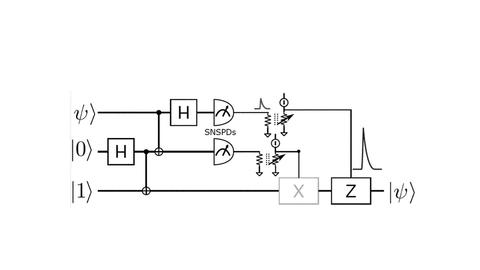Problem
Patent Description
Presently, superconducting electronics are being applied to areas such as computational backends for future quantum processors, high-performance supercomputing, and ultrafast digital signal processing. In all of these areas, data must be communicated between the superconducting cryogenic stages and room temperature for control and storage. However, the conventional room temperature electronics (e.g. silicon) and optoelectronics (e.g. GaAs) with which these superconducting systems need to interface require large voltages (>700 mV) to drive. These large voltages are difficult for superconducting devices to produce, as their fundamental gap energy is on the order of millivolts and their driving impedances are typically on the order of tens of Ohms. As a result, superconducting electronics typically have their data read out at room temperature using coax lines and amplifiers, which both limits the total bandwidth with which data can be communicated and generates unwanted thermal load on the cryogenic stages. NIST has invented a superconducting circuit element which amplifies voltages while eliminating these issues.
The figure below is an example of a potential photonic quantum teleportation scheme, in which a quantum state W is input into the left side of the circuit, teleported from the top communications line to the bottom communications line another using two measurements and two gates, and appears at the bottom output. In this circuit, the thermal impedance amplifier is used as an amplification device which translates low-voltage superconducting signals into higher-voltage signals which are compatible with semiconductor electronics. In this example, the quantum states are encoded as photons, and they are measured using superconducting nanowire single-photon nanowire detectors (SNSPDs). The SNSPDs produce a small voltage, on the order of 100 μV, and the thermal impedance amplifier is used to amplify this small voltage into a much larger voltage (on the order of 100-1,000 mV) which is then transmitted to the X and/or Z gates, which in one embodiment may be photonic optical modulators. Since these optical modulators typically require voltages >100 mV to function, the SNSPDs cannot directly drive the modulators, and the thermal impedance amplifier is instead used as a voltage amplification mechanism.

Invention
A thermal impedance amplifier includes: a resistive layer including: a resistance member; a first electrode in electrical communication with the resistance member; and a second electrode in electrical communication with the resistance member; a switch layer opposing the resistive layer and including: a switch member; a first switch electrode in electrical communication with the switch member; and a second switch electrode in electrical communication with the switch member, the switch member: switching from a first resistance to a second resistance in response to receiving phonons from the resistance member, being superconductive at the first resistance, and producing an amplified voltage in response to being at the second resistance; and a thermal conductor interposed between the resistance member and the switch member.
Features
This invention eliminates the restriction of having the voltage too high or low.

